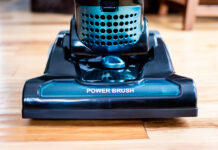
There are many known toxins lurking in the average home. A few of these common toxins are formaldehyde, trichloroethylene, and benzene. These substances can be found in many common household items and are off-gassed into the air over time. Fortunately, there are steps you can take to remove these air toxins.
The Culprits
Formaldehyde – Found in the glue that holds together particle board, insulation, paints, and fire retardants. This chemical substance is a known carcinogen; thankfully, there are new restrictions on the levels furniture can release starting in 2013.
Trichloroethylene (TCE)- found in things like varnishes, paints, adhesives, spot removers, and metal cleaners. High amounts of TCE over time have been shown to have effects on the central nervous system.
Benzene – Found in plastics, synthetic fibers, detergents, dyes, cigarette smoke, and solvents. Benzene is another known carcinogen.
The Solutions
The following 10 plants are the most effective clean air plants, according to a study conducted by Dr. Wolverton and NASA. To see a complete listing of the top 50 purifying houseplants you can find a copy of Dr. Woverton’s book here.
Areca Palm (Dypsis lutescens or Chrysalidocarpus lutescens)- Most effective houseplant at removing the three toxins listed above. The areca palm is also known for being a natural humidifier, because of this it requires heavy watering and plenty of indirect light. This plant is non-toxic to dogs and cats.
Lady Palm ( many types all of the Rhapis species)- Like many palms, the lady palm requires bright indirect sunlight and consistent watering. This plant is non-toxic to dogs and cats.
Bamboo Palm (Chamaedorea elegans)- The bamboo palm does well in a variety of light settings, unlike the previous palms. Also, depending on the level of light your plant is getting, it may need to be watered less. Always allow the soil to dry out between watering. This plant is non-toxic to cats and dogs
Dracaena Janet Craig (Dracaena deremensis)- Unlike most of the plants on this list, the dracaena janet craig does best with low levels of light and watering. This plant is toxic for cats and dogs.
Boston Fern (Nephrolepis exalta bostoniensis)- This plant thrives when the soil is kept consistently wet and it is placed in indirect light. In order to insure your plants health make sure it is in a humid environment. This plant is non-toxic to cats and dogs.
Rubber Plant (Ficus elastica)- An easy to care for houseplant only requiring consistent watering and fairs well in low light. This plant is toxic to cats and dogs.
Dwarf Date Palm (Phoenix roebelenii)- This particular palm needs bright light and consistent watering. It does not tolerate drafty areas and will thrive if placed in a place with high humidity. This plant is non-toxic to cats and dogs.
Peace Lily (Phoenix roebelenii)- The peace lily is easy to care for, making it an extremely popular houseplant. It does best in lower lights with high levels of watering. This plant is toxic to cats and dogs.
English Ivy (Hedera helix)- Another easy plant for those without a green thumb, only needing heavy watering. This plant is toxic to cats and dogs.
Ficus Alii (Ficus macleilandii)- This plant also needs bright, indirect light and consistent watering. I found conflicting information about the toxicity of the ficus alii so use your own judgment when placing in a house with cats or dogs.
Other Impressive Plants
Gerber Daisy– This plant did a wonderful job of removing the three toxins listed above, it can also be grown in small place and adds a nice punch of color to a room.
Pot Mum– A potted mum had one of the highest removal percentages of benzene in the test room. This plant is also another way to add some color to your houseplant variety.
Soil control– A control was used of just potted soil, this pot removed 20% of the benzene and 9% of TCE in the room. So, if you’re not fond of any of the plants listed, having any potted plant in your home is sure to do some good.
Sources:
1) How to Grow Fresh Air by Dr. B.C Wolverton
2) Houseplant Care tips- Source 2
3) Houseplant411 – Source 3
4) ASPCA- Source 4
5) Interior Landscape Plants for Indoor Air Pollution Abatement by Wolverton, B. C., A. Johnson and K. Bounds- Source 5









































